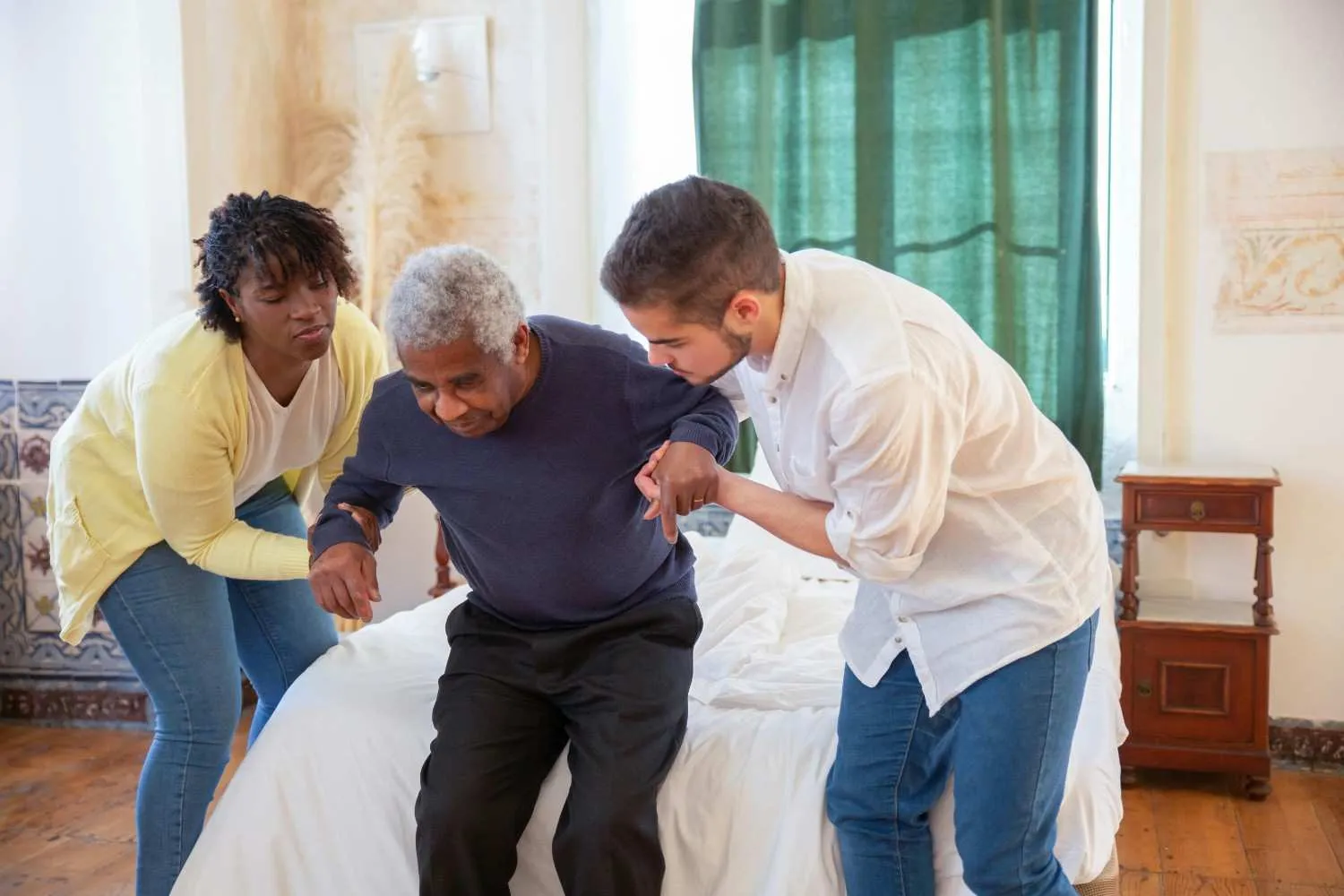Tension Myositis Syndrome (TMS) confuses doctors and patients alike. First identified by Dr. John Sarno, this condition links chronic pain to emotional stress rather than physical damage. Imagine suffering from back pain for years, yet MRIs show no structural issues.
This is TMS, a mind-body disorder where repressed emotions trigger real physical symptoms. But what if the answer to relief lies in understanding your brain’s role in pain? Let’s explore Tension Myositis Syndrome, its triggers, and why traditional medicine often misses the mark.
What Is Tension Myositis Syndrome (TMS)?
Tension Myositis Syndrome (also called Tension Myoneural Syndrome) is a psychosomatic condition. It causes chronic pain, numbness, or weakness without physical injury.
Dr. Sarno, a pioneer in mind-body medicine, observed that patients with identical spine abnormalities had different pain levels. His conclusion? The brain creates pain to distract from unresolved stress or trauma.
How Does TMS Work?
-
Emotional stress activates the nervous system.
-
Reduced blood flow (oxygen deprivation) occurs in muscles/nerves.
-
The brain generates pain signals as a protective distraction.
Unlike arthritis or herniated discs, TMS stems from the mind-body connection. It’s not “all in your head”, it’s a physical response to psychological triggers.
What Causes TMS?
TMS flares often follow emotional stressors, not physical strain. Common triggers include:
-
Repressed Emotions: Anger, anxiety, or past trauma buried unconsciously.
-
Perfectionism: High self-expectations increasing internal pressure.
-
Life Changes: Job loss, divorce, or caregiving stress.
-
Chronic Fear: Fear of pain itself, creating a vicious cycle.
If you’ve experienced chronic pain following an emotional upheaval, your brain may be using pain as a coping mechanism.
TMS Symptoms: How to Recognize the Signs
TMS mimics structural disorders but lacks physical evidence. Key symptoms include:
-
Migrating Pain: Shifts between back, neck, shoulders, or limbs.
-
Burning/Tingling: Without nerve damage.
-
Sudden Weakness: Legs feeling heavy; grip strength dropping.
-
GI Issues: Irritable bowel syndrome (IBS) alongside pain.
TMS mimics structural disorders but has distinct patterns. Here’s how to tell the difference:
|
Feature |
Traditional Pain |
TMS Pain |
|
Source |
Herniated disc |
Brain-generated |
|
MRI Findings |
Visible damage |
Normal |
|
Pain Pattern |
Localized |
Moves |
|
Response to Rest |
Improves |
Worsens |
Red Flag: If physical therapy, medication, or surgeries haven’t helped, consider TMS.
Why TMS Is Often Misdiagnosed
Most physicians focus on scans and blood tests. But TMS leaves no physical marks. Challenges include:
-
Over-Reliance on Imaging: MRIs show disc issues in 60% of pain-free adults.
-
Lack of Training: Medical schools rarely teach psychosomatic disorders.
-
Patient Skepticism: Accepting emotional pain causes physical symptoms and makes it dismissive.
-
Time Constraints: 10-minute appointments prioritize quick fixes over exploring emotional root causes.
-
Insurance Hurdles: Coverage often requires physical proof of injury, which TMS lacks.
-
Mental Health Stigma: Patients fear being labeled “hypochondriacs” if stress is blamed for pain.
-
Fear of Misdiagnosis: Doctors avoid TMS diagnoses to prevent missing rare physical conditions.
-
No Standard Tests: No blood work or imaging exists to confirm TMS, relying on clinical judgment alone.
However, science backs up the mind-body connection. Chronic pain rewires the brain, reinforcing painful signals. But just as the brain can create pain, it can also unlearn it.
The Brain-Pain Connection: Why TMS Hurts
Your brain prioritizes survival. If emotions feel too overwhelming, it “chooses” pain as a distraction.
Science Behind It:
-
Stress → Fight-or-flight mode → Reduced oxygen to muscles.
-
Brain amplifies pain signals to distract from emotional turmoil.
-
Over time, neural pathways reinforce pain as a habit.
Breaking the Cycle: Retrain your brain to stop viewing pain as a threat.
Proven Treatments for Tension Myositis Syndrome: How to Heal Naturally
TMS recovery requires retraining your brain to break pain habits. The best approaches combine psychology and movement:
1. Brain Retraining Programs
-
Re-origin Method: Teaches neuroplasticity exercises to rewire pain responses.
-
Daily Journaling: Identifies stress triggers.
-
Biofeedback Training: Uses sensors to monitor heart rate or muscle tension, teaching real-time stress control.
2. Psychotherapy
-
Cognitive Behavioral Therapy (CBT): Challenges fear-based thoughts.
-
Exposure Therapy: Gradual return to feared activities (e.g., lifting).
-
Group Therapy: Builds community support to reduce isolation and shame.
3. Physical Rehab Without Fear
-
Gentle Movement: Walking or yoga to rebuild movement confidence.
-
Avoid Bed Rest: Inactivity worsens TMS.
-
Aqua Therapy: Low-impact exercises in water ease muscle tension without strain.
4. Stress Management Techniques
-
Breathwork: Calms the nervous system.
-
Mindfulness: Observes emotions without judgment.
-
Guided Visualization: Redirects focus from pain to calming mental imagery (e.g., envisioning a peaceful forest).
Living With TMS: Daily Habits to Manage TMS Long-Term
Small changes can prevent pain flare-ups:
-
Morning Check-In: Spend 2 minutes noting emotions.
-
Movement Snacks: Stretch hourly if desk-bound.
-
Joy List: Keep 5 quick mood boosters (e.g., comedy clips).
-
Pain Journal: Track symptoms and stressors.
-
Hydration Alarms: Set reminders to sip water hourly, dehydration tightens muscles.
-
Sleep Rituals: Wind down with calming music or a book to improve sleep quality.
-
Support Circles: Text a friend daily, isolation fuels stress, and connection eases it.
-
Meal Mindfulness: Chew slowly and skip caffeine to avoid gut tension.
-
Screen Fasts: Unplug for 15 minutes every 2 hours to reset your nervous system.
-
Art Breaks: Doodle or craft for 10 minutes to redirect focus from pain.
Can You Fully Recover From TMS? The Long-Term Outlook
Yes, but it requires work. Studies show that 70-80% improve significantly with mind-body approaches.
Keys to success:
-
Consistency: Daily brain retraining.
-
Patience: Symptoms may flare before fading.
-
Support: Join TMS communities for motivation.
Warning Sign: Beware of “magic cure” claims. Recovery is a process, not an instant fix.
Final Thoughts
Tension Myositis Syndrome challenges conventional views of pain, but the solution lies in understanding your brain’s role. By addressing emotional roots and retraining your brain, lasting relief is possible.
Start today: start a pain journal, try a brain retraining program like re-origin, share this guide with loved ones to help others discover TMS, and consult a TMS-informed therapist. Your pain doesn’t define you, your brain can heal.
Need personalized guidance? Book a free re-origin consultation and begin your journey to pain-free living. Your brain can heal—give it the chance!
Frequently Asked Questions
Can stress alone cause TMS?
Yes. Chronic stress activates the nervous system, triggering oxygen deprivation and pain.
Is TMS a mental illness?
No. It’s a physical response to stress, not a psychiatric disorder.
How long does TMS recovery take?
Most see improvement in 3-6 months with consistent effort.
Does exercise worsen TMS?
No. Gentle movement retrains the brain that activity is safe.
Are medicines effective for TMS?
Painkillers mask symptoms. Address root causes instead.
Can kids develop TMS?
Yes. Academic pressure or family stress can trigger it in teens.
How is TMS different from fibromyalgia?
They overlap, but fibromyalgia often involves tender points. TMS pain migrates.
Reviewed by







